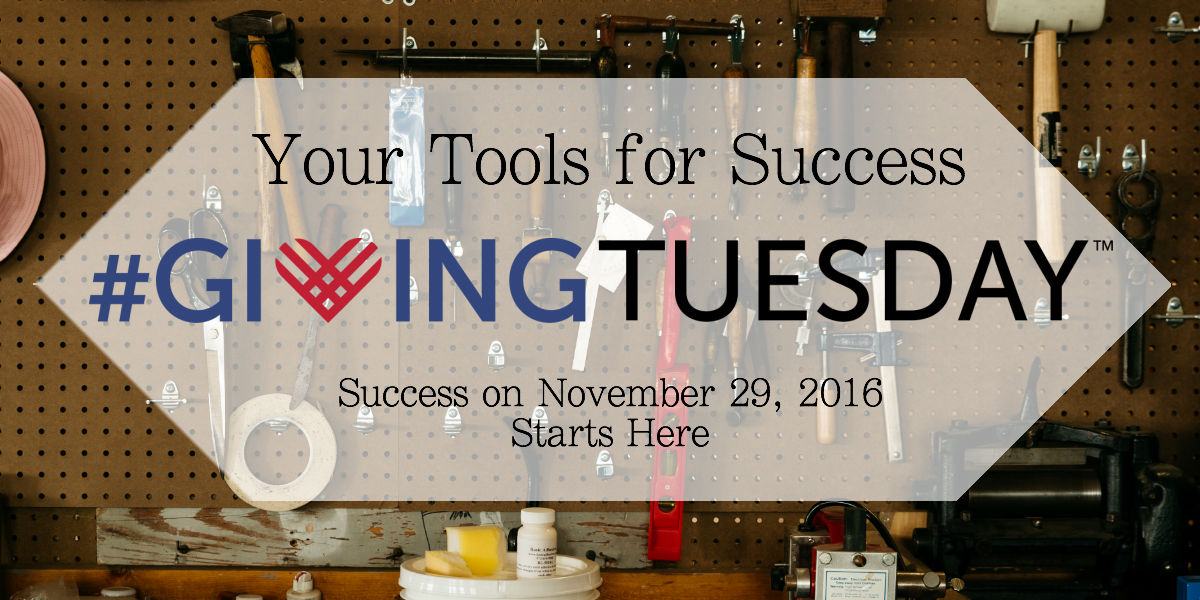
This is the second post in our #GivingTuesday series, sharing some tried and true tips on creating and testing your call to action. Check out the first post in the series on planning. Save the date: July 28th we will close out the series with a live webinar. Reserve your spot now!
UPDATE 7/12/2017: Watch our free webinar recording, Seize #GivingTuesday Success with Fundraising Wisdom and Salesforce. which was originally broadcast on July 11, 2017.
#GivingTuesday is a global day of giving that brings people all over the world together to give back after the rush and craziness of Thanksgiving, Black Friday and Cyber Monday. It’s the time to activate your community and begin the end of year giving cycle for your organization.
Hopefully you’ve already finalized your communications plan. If not, we’ve created a basic communications plan for #GivingTuesday to get you started. Now it’s time to develop the call to action that will connect those individual communications together.
Ultimately, you want people to give to your organization and you want them to tell others to do the same, right? Your call to action should tap into those feelings of community, giving back and collective impact.
Here are some questions you can ask yourself to help develop your #GivingTuesday message:
- Can you correlate gifts to mission based activities - what will $25, $50, $100 or $500 do for your organization’s mission?
- Can you synthesize your organization’s impact into one story about a person, place or thing?
- Better yet, can you tell the story of what wouldn’t happen if someone doesn’t give?
Remember, keep it simple, clear and weave throughout all of your communication platforms. Once you have a clear call to action, it’s time to test it.
Step 2: Test your messaging!
This can be hard to believe for those of us in the trenches of the nonprofit world, but not everyone knows when #GivingTuesday is or why it’s important. Help your donors with advance notice and reminders so they can plan for that amazing online gift coming your way and be your advocate.
This also gives you a chance to test your messaging! Did you know that A/B testing helped the Obama campaign raise $690 million? In one experiment, they tested 18 different combinations of emails and subject lines and sent different versions to small groups of subscribers to see which one won.
The hard part is always figuring out exactly what to change, which is why we offer source tracking codes in all of our Soapbox Engage apps. If you include source tracking codes in a link to your Soapbox Engage pages, every click is automatically recorded to your Google Analytics account. Even better, when a user takes an action like completing a donation from a link that includes source tracking codes, those variables are saved automatically to Salesforce. Think of the reporting you’ll be able to do!
A key point about testing: you only want one - at most two - elements of your messaging to be different between versions. Otherwise, you won’t be able to evaluate what element worked best. The brilliant folks over at NTEN have a few pointers on how to avoid testing mistakes.
Here is a sample test plan:

Choose a small test group, split them in half. Half A will receive Version A. Half B will receive Version B. Only one of the elements between Version A and Version B should be different. Repeat as necessary, alternating which element is different between the two versions as long as your email list allows.
This is just one option. You can go a step further by creating sub-versions that mix and match - just like the Obama campaign did to come up with 18 different versions of one email to test.
Next week we’ll give pointers on how to activate your community on your behalf Don’t forget to sign up for our Gearing up for #GivingTuesday webinar on July 28th!